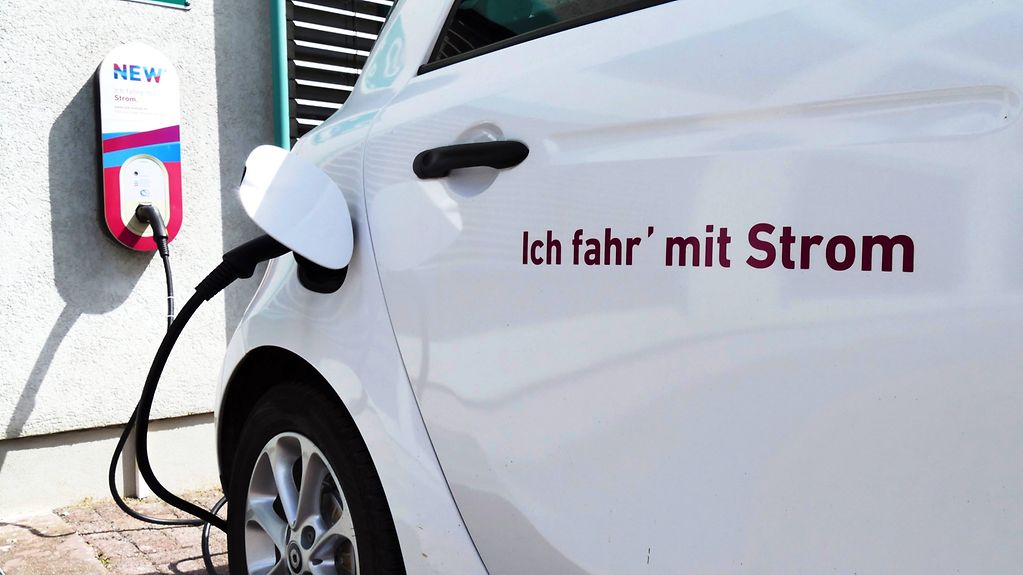Electric mobility
Electric mobility contributes to climate change mitigation. The Federal Government intends to increase the number of battery electric vehicles on the roads by inviting tenders, initially for 1,000 rapid charging stations. The legal basis for the invitation to tender must, however, be put in place. The procedure has now been launched with the Rapid Charging Act. Here is an overview in the form of FAQs.
3 min reading time

The Rapid Charging Act (Schnellladegesetz) will further extend the infrastructure for charging stations in Germany.
Photo: imago images/JOKER/PaulxEckenroth
Why do we need a Rapid Charging Act?
The Federal Government has undertaken to reduce CO2 emissions in the transport sector by 42 per cent of the 1990 levels by 2030. Battery electric vehicles (BEV) can make an important contribution. The vehicles will only become more generally accepted and their numbers will only increase, however, if a nationwide, needs-driven, user-friendly rapid charging infrastructure is in place that is accessible to everyone.
What main points does the Act regulate?
The goal of the Rapid Charging Act is to guarantee a nationwide infrastructure for the rapid charging of battery electric vehicles. A Europe-wide invitation to tender is to make this possible, and the Act now puts in place the necessary legal basis. It regulates the essentials of the tendering procedure per se and the relevant rights and obligations of the Federal Government.
Where do we go from here?
The first step for the Federal Government will be to invite tenders for 1,000 rapid charging stations for medium- and long-haul traffic – as set out in the master plan for charging infrastructure published in November 2019. At these rapid charging stations, it will be possible to charge the battery of an electric vehicle to about 80 per cent in roughly 20 minutes.
The invitation will group locations in lots, each of which will include economically attractive and economically less attractive areas. The company or companies submitting the most economic bid will receive the contract for that lot.
Conditions: The stations must be modern and customer friendly. The charging infrastructure must work swiftly and reliably. And users must be able to pay using credit and debit cards. Plug-in hybrids, which have a conventional combustion engine in addition to their electric engine, are also to be able to charge there.
The master plan for charging infrastructure published in November 2019 lays out measures for the swift expansion of a nationwide, user-friendly charging infrastructure. Specifically there is to be targeted support, an improved legal framework, and active coordination between the Federal and Länder Governments, municipalities and industry.
Is a charging point the same as a charging station?
To put it briefly: Under the provisions of the Rapid Charging Act
- a charging point is a facility that is designed and can be used to charge battery electric vehicles and that can charge only one such vehicle at a time;
- a rapid charging point is a charging point with an output of at least 150 KW;
- a rapid charging station is an area where several rapid charging points and auxiliary facilities are available and accessible to everyone – including facilities needed to operate the station;
- an auxiliary facility is a facility that is available to users of rapid charging points while their vehicle is charging and that enhances the quality of their stay, in particular toilets or hospitality.
According to the register of stationary chargers of the Federal Network Agency for Electricity, Gas, Telecommunications, Post and Railway, 35,602 public charging points are currently operational, including 30,387 normal charging points and 5,215 rapid charging points (as at 31 October 2020).